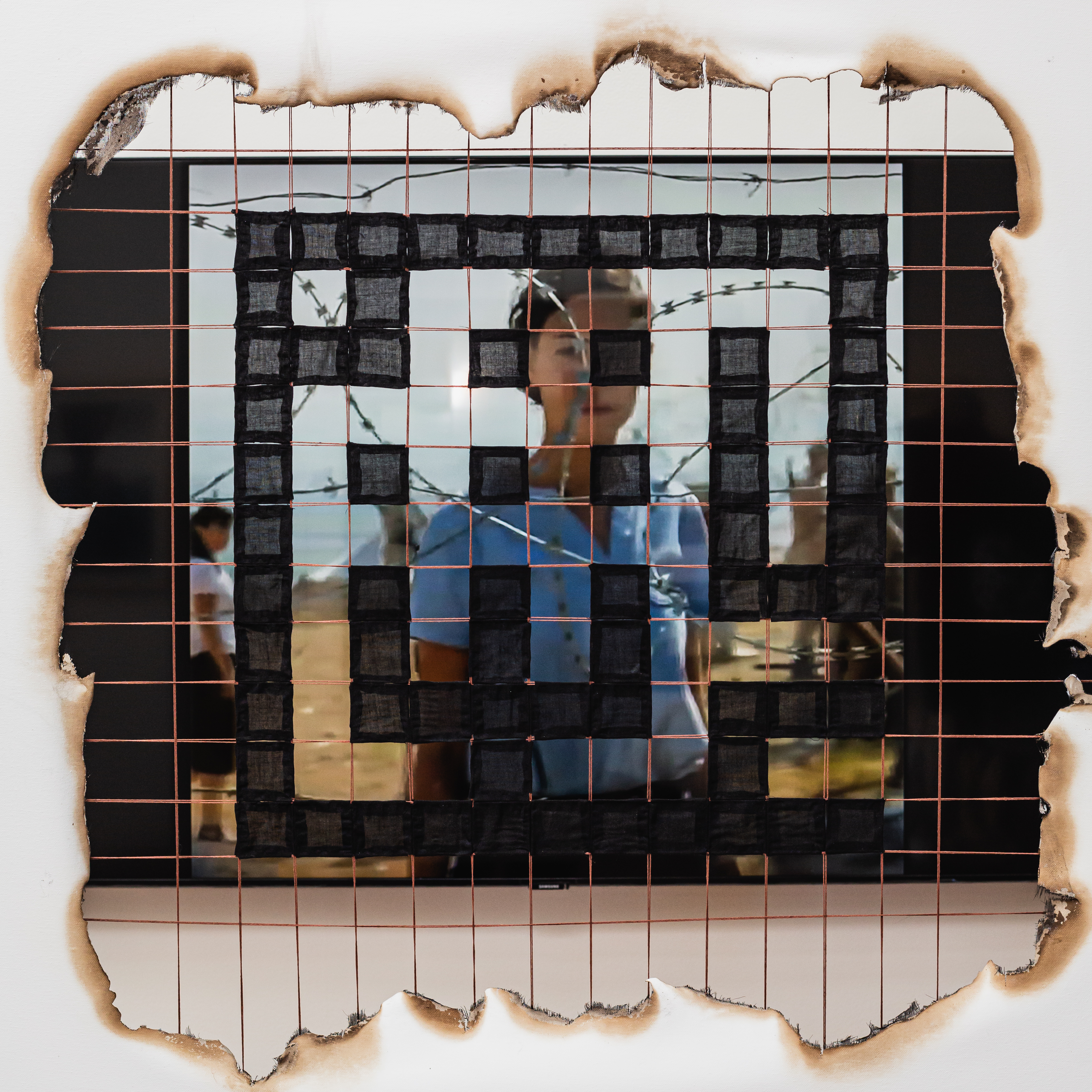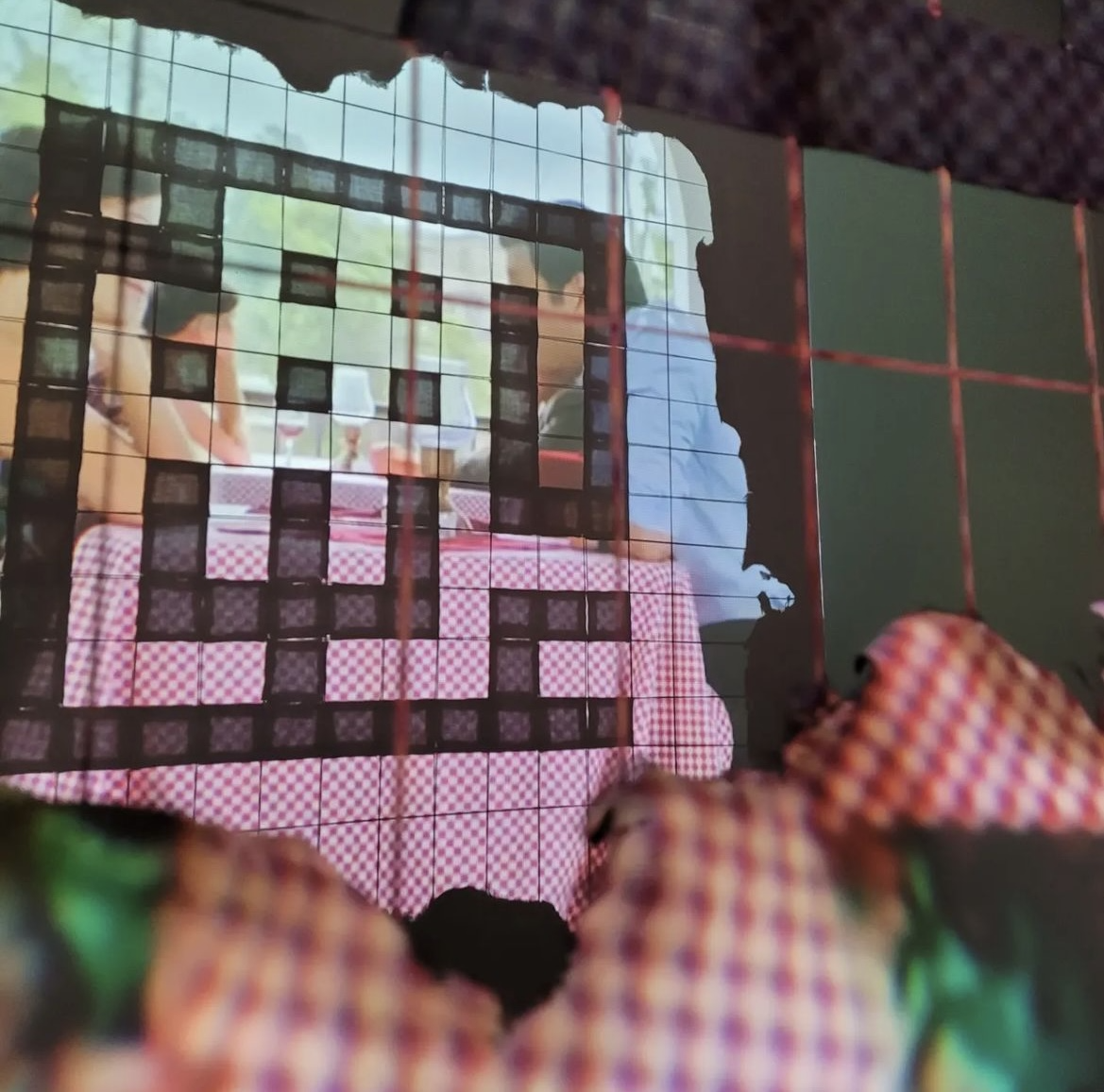Raneen Shamon



About
عشق love
My installation examines our complex relationship with images of war. I seek to engage with the viewer’s sense of sympathy through a juxtaposition of clips of relevant cinematic representations of people experiencing the impact of war with real documentary clips of war in news.
These moving images are projected onto a layered screen system that includes a depiction of the Arabic word for “love” in the Kufic style of calligraphy. Kufic was the earliest version of Arabic script, named after the city of Kufa in Iraq, where it was said to have been invented. This layered screen functions as a window, in which we decide whether to view the work through it or not, it determines to which we are drawn more, the scripted love story or the real captured clips of war.
The sense of cultural history evoked by the Kufic script is further enhanced through samples of Oud musical commemoration that starts with calm tones then drifts into loud siren-like Oud strumming that was created by the contemporary Iraqi musician Naseer Shamma imitating the Us bombing raid that killing more than 400 Iraqi civilians that struck an underground shelter in Baghdad’s Amiriya district in 1991.
I was a resident in a city in Iraq that was invaded by Isis in 2014. This lived experience of the impact of war informs the creation of the work, yet I am aware of other perspectives and interpretations. I find it interesting how those who have not experienced war can react differently depending on the quality of the video, the plot, and how engaged they feel to the people in the clip.
Film Credit: Haret el Yahood, Jews Alley 2015
Documentary Credit: Al Sharqiya, Al Iraqia, and Al Baghdadia news
Sound Credit: Naseer Shamma - Happened At Al Amiriya
Bio
Born in Iraq in 1999. Shamon is a visual artist who works across multiple mediums to create conceptual artworks mostly exploring topics of migration displacement and war. Shamon became one of many Iraqis who fled the terror of life when Isis invaded Iraq in 2014 she shifted around the country with her family and then eventually fled to Jordan where they waited for three years before coming to Australia as refugees in 2017. She has exhibited her works within Sydney in Blacktown Art Centre, Manly Art Gallery and Museum and others.